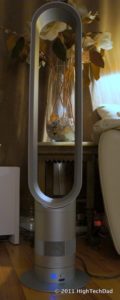
I mean, if you think about it carefully, it makes a lot of sense. Dyson produces vacuums which suck air from one area, the ground, and then blows it out somewhere else, to the bagless canister. Their fan…sorry…”Air Multiplier” does much the same thing. It sucks the air from one area and blows it out a different one. While this is an obvious extension of the vacuum motor science and technology, it is, in my opinion, a nice applications of one product’s technology to another one in a very different space.
Dyson does something more than just blow air around with their Air Multiplier, it takes the air and it “amplifies” it. So what does that mean exactly? Think of it this way, it’s sort of like a pressure washer. If you attach a nozzle at the end of your garden hose, you do get a stronger stream because the water is sent through a smaller opening under pressure. But when you use a pressure washer, not only is the water going through a small opening, a motor is used to increase the pressure of the water going through it. The Air Multiplier acts in much the same way. While a traditional fan moves and accelerates the air, it does only that. The Air Multiplier takes the air in, accelerates it through a motor and then shoots it out through a smaller opening that is engineered to actually pull even more air in from around it, thus increasing the airflow significantly.
There are 4 ways that the air multiplication takes place. Via:
- The Draw – air is drawn in at 5.28 gallons per second via a brushless motor similar to the way jet engines work.

- Acceleration – the air is accelerated via an “annular aperture” – in English, that means that it is compressed and forced through a smaller opening.

- Induced – air behind the Dyson is sucked into the flow as well.

- Entrained – air next to the airflow output is pulled along also.

Whatever the technologies are, the bottom line is that the air definitely is moving.
Apart from the obviously cool design, both aesthetically and functionally, there are some other advantages of the Dyson Air Multiplier that should be mentioned:
- Consistent flow of air – traditional fans have “buffeting”, and no, this has nothing to do with getting food that is laid out on a table. It does have to do with how the air is chopped up by a fan blade as it is sent to you though. The Dyson eliminates buffeting by sending through an unchopped/unbroken stream of air.

- Cleaning is a snap – since the Air Multiplier is not hidden behind a protective cover (something that I will go into later), cleaning it is extremely easy. This is one of my biggest complaints about traditional fans is that the blades get a lot of built-up dust and the cleaning process is really a pain. With the Air Multiplier, you can simply wipe down all of the surfaces with a cloth quite easily.
- Safety – of all of the fans that I have seen in the market, the Air Multiplier is probably the safest one that I have seen, apart from someone actually physically fanning me. More on safety later.
- Many speeds – with traditional fans, you, at most, only get 3-4 settings for air speed. There are some fans where you can control it a bit better by using a dial, and this is the method that Dyson uses. You can precisely adjust the air speed via a “dimmer switch” (think of lights dimming – you don’t simply turn it on or off, but adjust it to exactly the setting you want).
- Easy adjustments – depending on the Dyson Air Multiplier model, you can adjust the swivel or have it rotate back and forth.
But enough with the technical jargon and geek talk. How well does it actually work?
I received the Dyson Air Multiplier AM02 Tower Fan which is about 40 inches tall. Assembly is a snap, literally. There are two snapping points for the base to attach to the motor and then the motor to the circular opening where the airflow action takes place. That assembly process took me about a minute or so to complete. There is also a remote control that comes with it that allows you to turn the fan on or off, adjust the fan speed and turn on or of the rotation. A nice little touch with the remote is that it magnetically attaches to the top of the fan.
I think the most important “feature” of the Air Multiplier is the fact that it is completely bladeless. While the no-buffeting is a pretty cool thing, that is not the feature that got my attention. If you are a parent of small kids, pay attention here – this feature was designed for you! Traditional fans are extremely unsafe. Not only can little fingers fit through some of the blade cages of traditional fans, but hair can get sucked in and wrapped around the blades extremely quickly which cannot only be scary, but also painful and cause injury.
The Dyson is blade-less, which means, little fingers and hair are safe. To illustrate this, please take a look at the video below (and note: no kids were hurt in this demonstration):
[iframe_loader width=”560″ height=”349″ src=”http://www.youtube.com/embed/j0p6xJ4YRqQ?rel=0″ frameborder=”0″ allowfullscreen]
There are two important takeaways from the video above: 1) the Dyson Air Multiplier is safe to use around children and 2) it is really easy to clean and keep clean. If you compare this against a traditional fan, you can quickly see how old fashioned fans are. The metal cages do prevent most fingers from being caught (except the small ones) but definitely NOT hair which can be quickly pulled in and become tangled in the blade. But the cage and blades also seem to attract a lot of dust and dirt, and if you don’t regularly clean them, can really become encrusted with dust. Cleaning is a bit of a pain as well, as you have to not only clean the cage, but also take it off and then do the blades. With the Dyson, there is no blade nor a safety cage that you have to worry about. Simply wipe down the surfaces of the Air Multiplier and you are good to go.
HighTechDad Rating
The Dyson Air Amplifier definitely gets my votes for design and family safety, and as I said, getting it up and running is literally a “snap.” Honestly, after seeing this design in action, I think that all fans should be made in this way. There is only one catch though, it does put a bit of a higher price-point on these Dyson fans, which range anywhere from $299 to $499 MSRP. Obviously, at this price point, not each and every family can afford one and my rating on price point below reflects that. Do check on Amazon as the prices could be a bit better. The 10″ AM01 Table Fan, for example is $266 on Amazon currently. If money isn’t an option and you have kids or just want a stylish, unique looking fan, the Dyson is for you.
Dyson does some incredible engineering with their products, and while the price point is typically a bit higher that normal, their products are highly engineered to be efficient at the single task that they are designed to do. The Air Multiplier is no different, it moves, circulates and amplifies the air, but is safe and easy to use in the process.
Disclosure Text : I have a material connection because I received a gift or sample of a product for consideration in preparing to write this content. I was/am not expected to return this item or gift after my review period. More information can be found in my About page as well as here.
HTD says: Fan your family safely and with style using the Dyson Air Multiplier!
[amazonproduct=B00383I0OE]
[amazonproduct=B003TFDV0O]
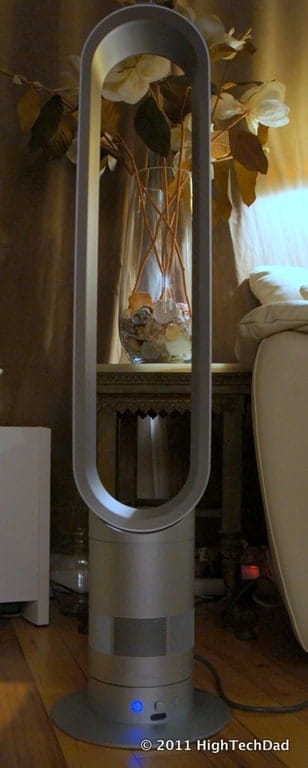
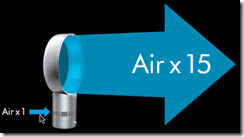
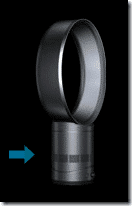

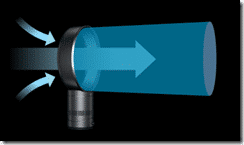
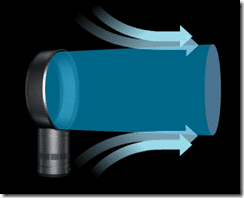

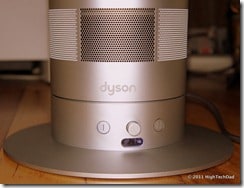







1 comment
Winigall
Do they make a cordless one? Either battery or rechargeable? I think the cord is also dangerous, especially for small children but also for the tripping hazard.